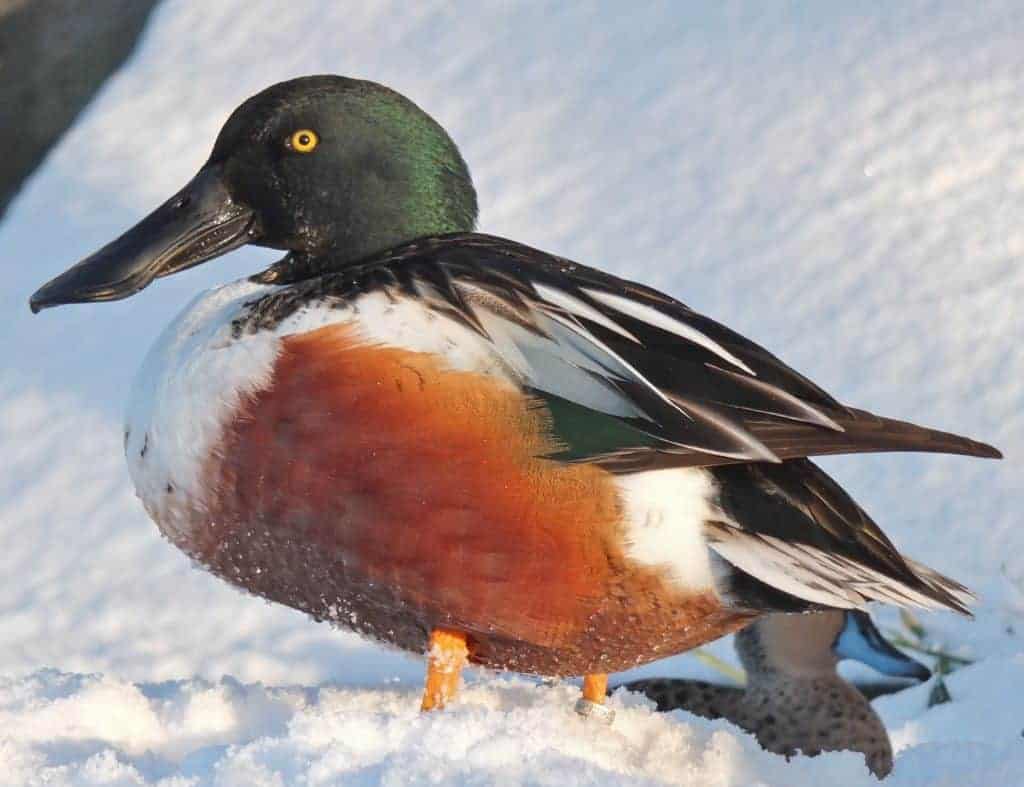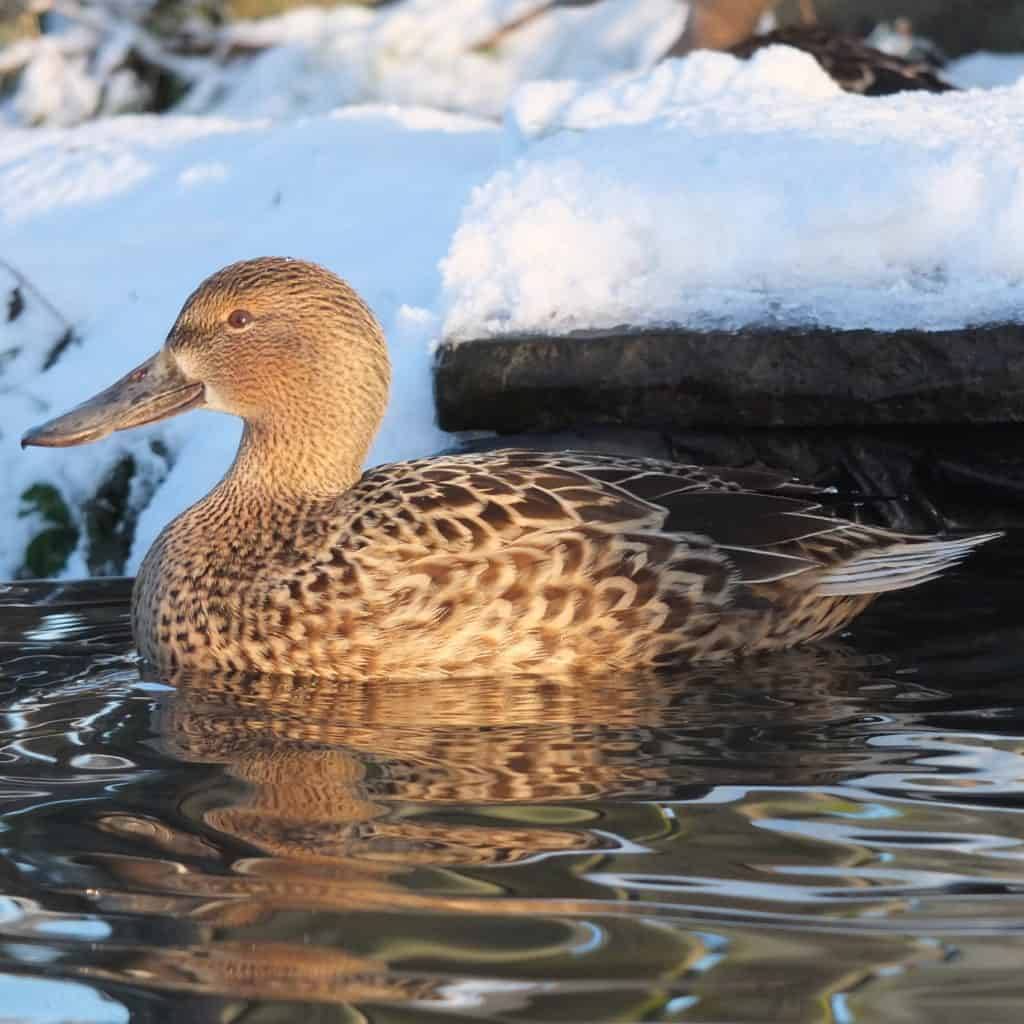Northern Shoveler

Northern Shovelers are hardy, but shelter should be provided in prolonged frosts. They do best on larger pools which support natural animal food.
Spatula clypeata
Few ducks are more aptly named than the Northern Shoveler, for the large, shovel-shaped beak is a striking feature of this surface-feeding duck. It is specially adapted for filtering planktonic crustaceans out of the water, and these ducks spend hours, swimming in flocks, feeding with their beaks in the water. In captivity they will eat seeds and grain, but they do best when fed a specialised diet that takes into account their omnivory.
They are one of the world’s most widespread ducks, breeding across most of the Northern Hemisphere, wintering south as far as the tropics. This species has three southern counterparts: the Red Shoveler, of southern South America; the Cape Shoveler of southern Africa, and the Australasian Shoveler. The drake Northern Shoveler has by far the brightest plumage of the four, but is the only one to have an eclipse plumage. First-year drakes are slow to gain full plumage, not gaining their breeding finery until late winter or early spring.
The UK holds 30–40% of the European population of this species in the non-breeding season, so the population is considered of international importance, and as a result the Northern Shoveler is Amber-listed in Britain, despite being of Least Concern globally.

If fed a suitable diet, shovelers do well in captivity. Ducklings can be a little delicate, but will thrive if provided with a high-protein diet to get them going. If kept in pairs they are unlikely to bother the other species of shovelers in a mixed collection, but rival pairs, kept in too small a space, will bicker and persecute each other.
Northern Shovelers like to nest on the ground in fairly open areas close to water. They make a shallow nest among vegetation such as reeds and sedge, which is lined with dry grasses, down and feathers. 9–11 buff or greenish eggs are incubated for an average of 25 days.
Download a colouring page here.
Share this page